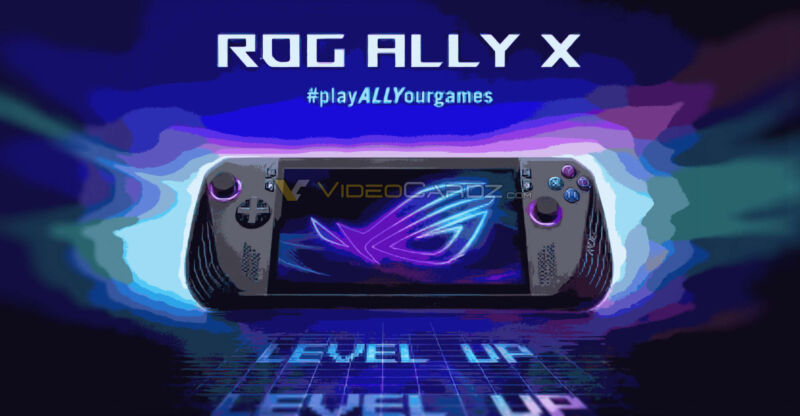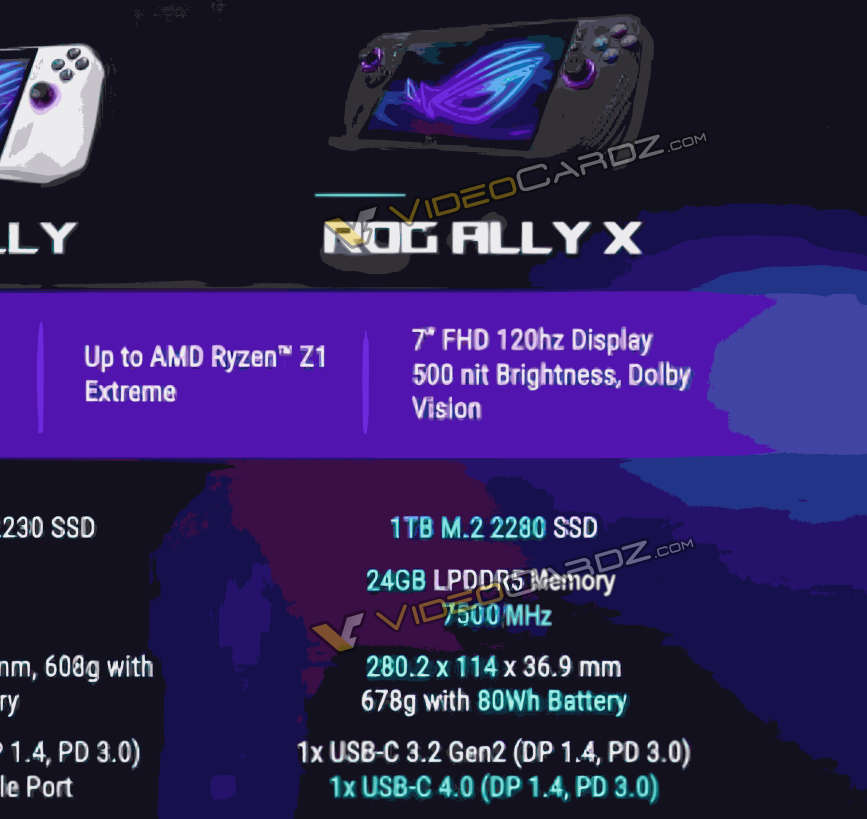
Asus’ ROG Ally was the first major-brand attempt to compete with Valve’s Steam Deck. It was beefy and interesting, but it had three major flaws: it ran Windows on a little touchscreen, it had unremarkable ergonomics, and its battery life was painful.
The Asus ROG (Republic of Gamers) Ally X, which has been announced and is due out June 2, seems to have had its specs leaked, and they indicate a fix for at least the battery life. Gaming site VideoCardz, starting its leak reveal with “No more rumors,” cites the ROG Ally X as having the same Ryzen Z1 Extreme APU as the prior ROG Ally, as well as the same 7-inch 1080p VRR screen with a 120 Hz refresh rate.

VideoCardz’ leaked image, seemingly from Asus marketing materials, with the ROG Ally X’s specifications.
The battery and memory have changed substantially, though. An 80-watt-hour battery, up from 40, somehow adds just 70 grams of weight and about 5 mm of thickness to the sequel device. By increasing the RAM from 16GB to 24GB and making it LPDDR5, the ROG Ally X may be able to lend more of it to the GPU, upping performance somewhat without demanding a new chip or architecture. There is also a second USB-C port, with USB4 speeds, that should help quite a bit with docking, charging while playing with accessories, and, I would guess, Linux hackery.
How does it feel? Only Sean Hollister at The Verge knows, outside of ASUS employees. The sequel has lost the weirdly sharp angles on the back, and more of your hand fits around the back, without the rear buttons being accidentally triggered so easily. The triggers and buttons all seem to have received some feedback-based upgrades to durability and feel.
If Asus sticks close to the $800 price point (that was also leaked), it could compete with the Steam Deck OLED on features and flash, if not library and polish. But as I’ve said before, perhaps somewhat defensively, bring on the flashier handheld PCs.
Expanding the viability of handheld PC gaming means more developers targeting these systems, in specs or just accessibility. More demand for new types of handhelds makes the whole field more interesting and competitive. Microsoft, which is keenly aware of this developing market and is contemplating a more cloud-based and less Xbox-centered gaming future, can only make Windows better on handhelds because the bar is pretty low right now.
All of that gives me more games to play on the couch while the rice is cooking, whether or not the device I’m holding has more and faster RAM and better USB-C ports than my gaming PC.



















+ There are no comments
Add yours